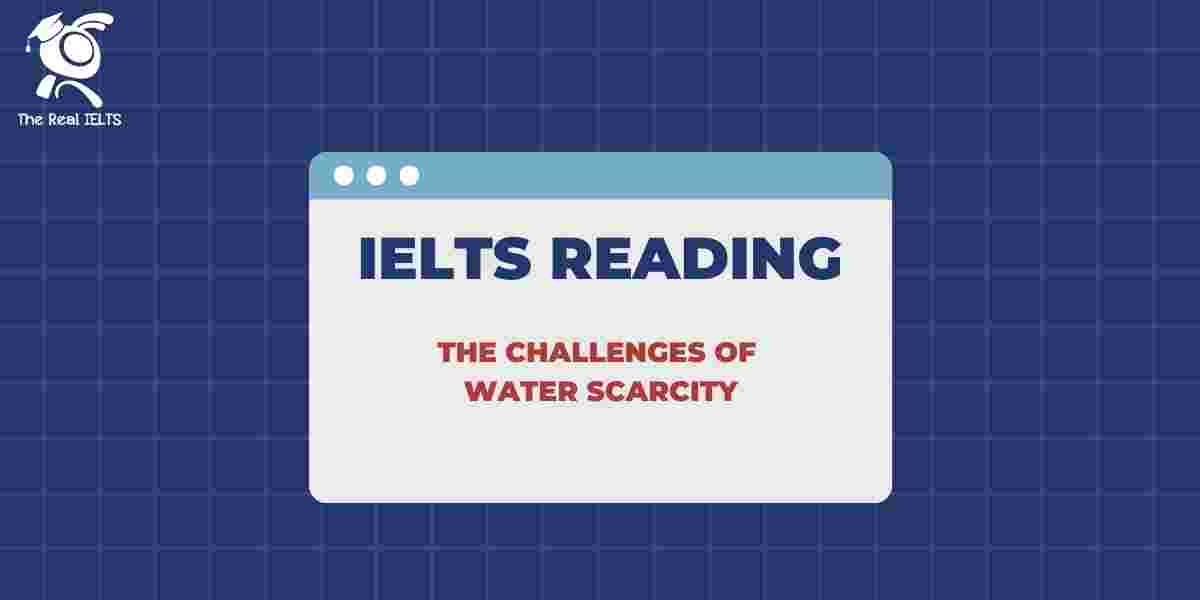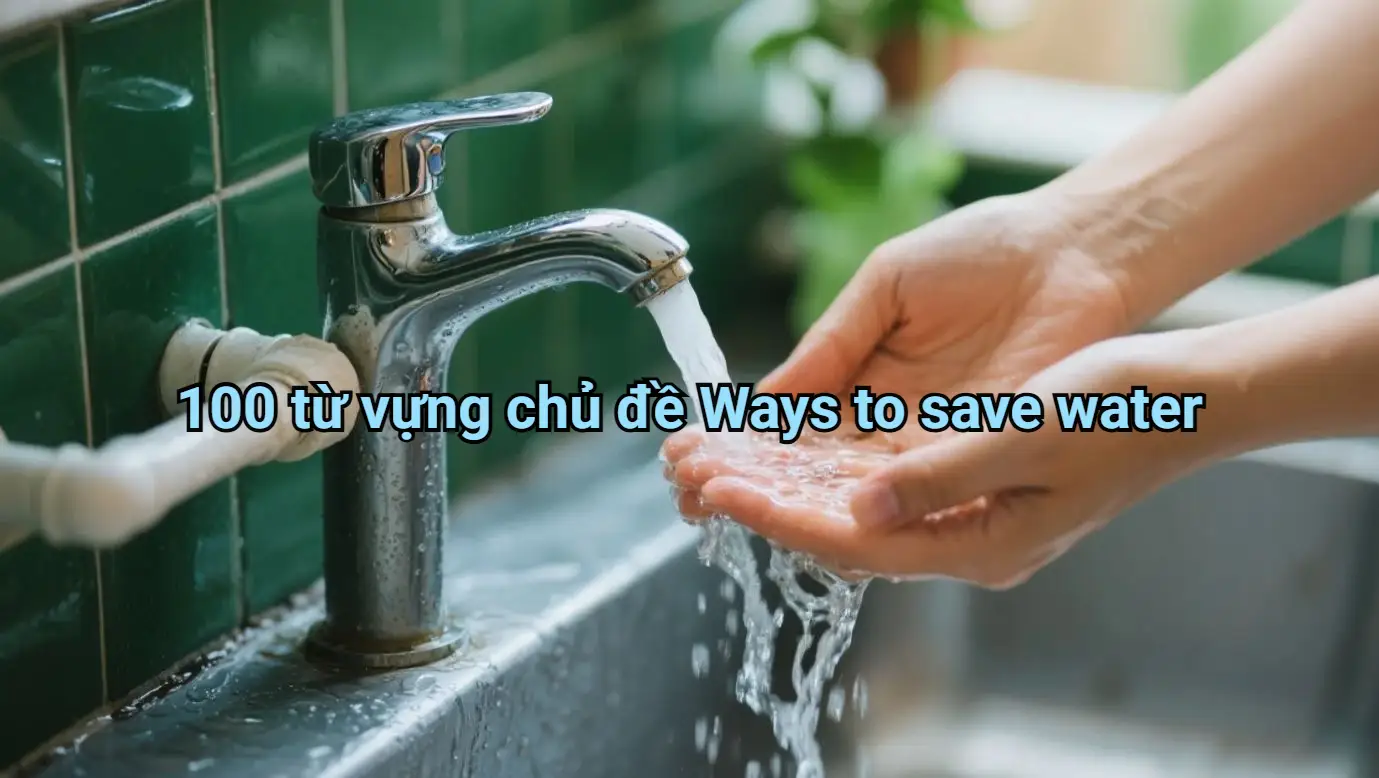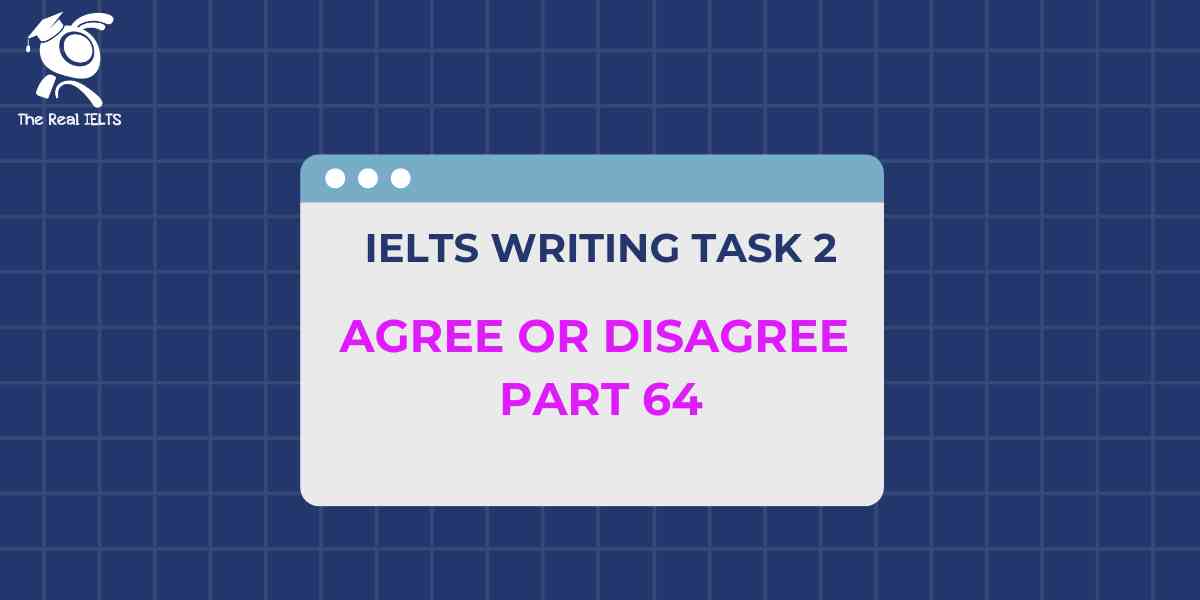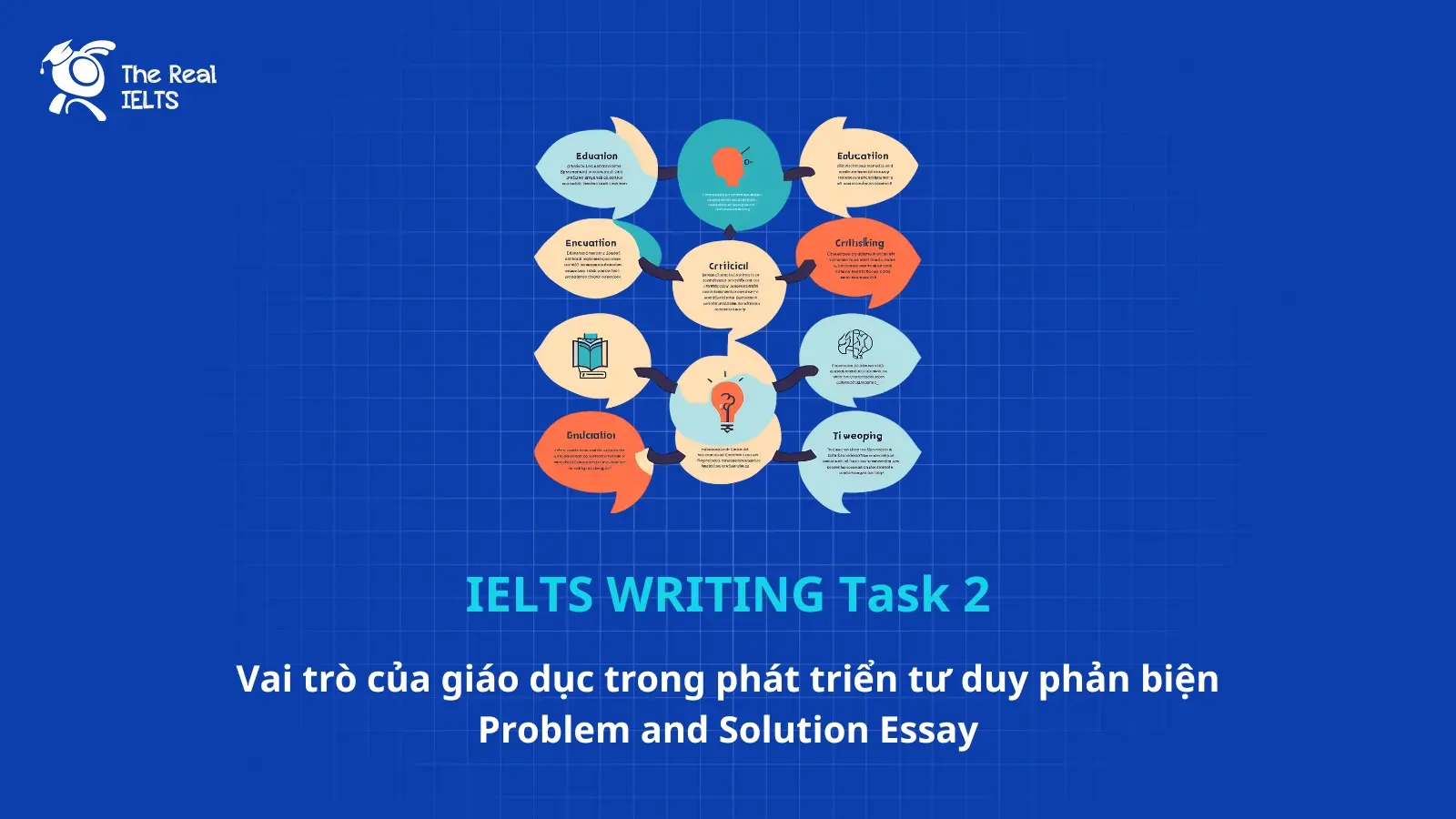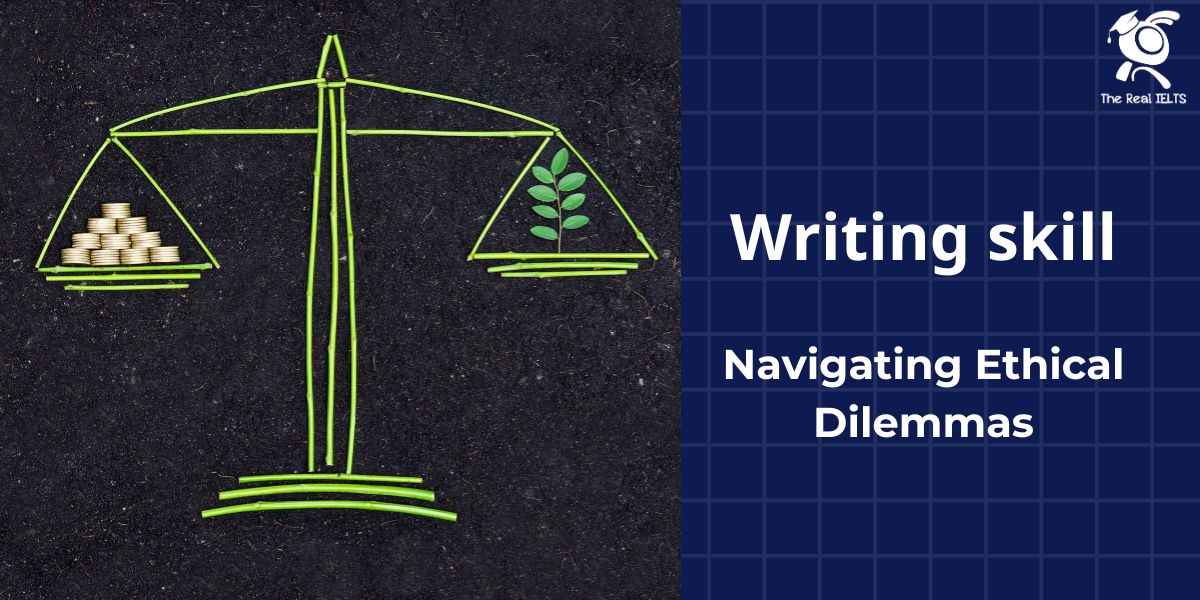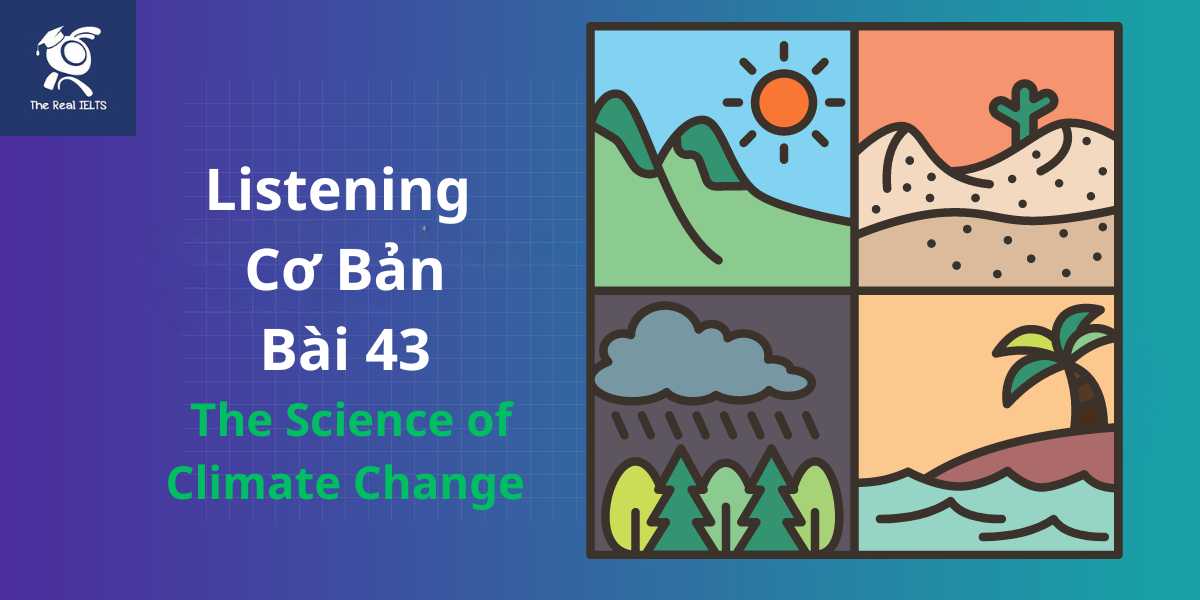Đề thi IELTS Reading có tiêu đề “The Challenges of Water Scarcity”
Nhớ đọc thêm các bài luyện thi IELTS nhé.
IELTS Reading “The Challenges of Water Scarcity“
The Challenges of Water Scarcity
Water scarcity is one of the most pressing issues facing the world today. With the global population steadily increasing, the demand for water is outstripping the available supply, particularly in regions already suffering from limited water resources. Water scarcity refers to the lack of sufficient available water resources to meet the demands of water usage within a region. It affects every continent and is exacerbated by various factors including climate change, population growth, and inefficient water management.
One of the primary causes of water scarcity is climate change. As global temperatures rise, weather patterns become increasingly unpredictable. In some regions, this leads to prolonged droughts and lower levels of precipitation, which significantly reduces the availability of fresh water. In contrast, other areas may experience excessive rainfall, but without the proper infrastructure, much of this water is not captured for future use, leading to wasted resources. Melting glaciers and polar ice caps, which are significant sources of fresh water, are also depleting rapidly due to global warming, further contributing to the problem.
Population growth is another significant contributor to water scarcity. As populations expand, particularly in urban areas, the demand for water increases not only for personal consumption but also for agriculture, industry, and energy production. Agriculture, in particular, is a major water-intensive activity, as it requires vast amounts of water for irrigation to grow crops. In many parts of the world, water is not used efficiently in agriculture, with outdated irrigation systems and poor water management leading to significant waste. This inefficiency in water use exacerbates the scarcity issue, as water that could have been conserved is lost.
Additionally, industrialization and economic development in emerging economies have led to increased water consumption. Industries such as manufacturing, mining, and energy production require large quantities of water, often resulting in the pollution of available freshwater resources. This contamination further limits the availability of clean water for human consumption and agricultural use. In many developing countries, regulations to control water pollution are either weak or poorly enforced, contributing to a vicious cycle of water scarcity and degradation.
Another challenge associated with water scarcity is the political and social tension it creates, particularly in regions where countries share water resources, such as rivers or lakes. As water becomes more scarce, competition for access to these shared resources intensifies, leading to potential conflicts. For example, the Nile River, which flows through several countries in northeastern Africa, has been a source of tension between Egypt, Sudan, and Ethiopia, as all three countries rely heavily on its waters for agriculture and drinking purposes. Disputes over water access and control can lead to diplomatic strain and, in extreme cases, even armed conflict.
Water scarcity also has severe social and economic impacts. In regions where water is scarce, people, particularly women and children, often have to travel long distances to collect water, reducing the time they can spend on education or income-generating activities. This, in turn, perpetuates cycles of poverty and inequality. Furthermore, the scarcity of clean water increases the risk of waterborne diseases, as people are forced to use contaminated water sources for drinking and sanitation. Diseases such as cholera, dysentery, and typhoid thrive in areas with poor water quality, leading to significant health challenges.
Addressing water scarcity requires a multifaceted approach. One crucial step is improving water management and efficiency. This can be achieved through modernizing irrigation systems in agriculture, adopting water-saving technologies in industries, and promoting water conservation at the household level. Governments and international organizations must also invest in infrastructure that can capture, store, and distribute water more effectively, particularly in regions that are prone to droughts or have erratic rainfall patterns.
In addition to improving water management, protecting and restoring ecosystems that contribute to water supplies is essential. Wetlands, forests, and watersheds play a critical role in regulating the water cycle by filtering water, recharging aquifers, and reducing the risk of floods. Degrading these ecosystems through deforestation, pollution, or over-extraction of water diminishes their ability to provide these services, further exacerbating water scarcity. Therefore, conservation efforts that focus on maintaining the health of these ecosystems are vital.
Lastly, addressing the root causes of climate change is necessary to mitigate the long-term impacts of water scarcity. Reducing greenhouse gas emissions, transitioning to renewable energy sources, and promoting sustainable agricultural practices can help stabilize global temperatures and restore balance to the water cycle. While these efforts require global cooperation and significant investment, they are essential for ensuring that future generations have access to sufficient water resources.
In conclusion, water scarcity is a complex and multifaceted challenge that affects millions of people worldwide. It is driven by a combination of climate change, population growth, inefficient water use, and industrialization. The consequences of water scarcity are far-reaching, impacting health, social stability, and economic development. However, with concerted efforts to improve water management, protect ecosystems, and address climate change, it is possible to mitigate the impacts of water scarcity and secure a sustainable water future for all.
Đề bài thi IELTS Reading
Multiple Choice (Câu hỏi trắc nghiệm)
- What is one of the main causes of water scarcity?
- A) Population decrease
- B) Overfishing
- C) Climate change
- D) Water pollution
- Which sector is a major contributor to water consumption?
- A) Education
- B) Tourism
- C) Agriculture
- D) Retail
- How does industrialization contribute to water scarcity?
- A) By increasing water consumption
- B) By improving water management
- C) By promoting agricultural efficiency
- D) By decreasing population growth
- Which region is mentioned as having potential conflicts over water resources?
- A) North America
- B) Sub-Saharan Africa
- C) Northeastern Africa
- D) South Asia
- What is the primary solution suggested to combat water scarcity?
- A) Building more dams
- B) Reducing population growth
- C) Improving water management
- D) Reducing energy consumption
- Which of the following ecosystems plays a critical role in water management?
- A) Deserts
- B) Wetlands
- C) Mountain ranges
- D) Coastal areas
- How is population growth contributing to water scarcity?
- A) Reducing water contamination
- B) Increasing demand for water
- C) Supporting water-saving policies
- D) Increasing freshwater supply
True/False/Not Given (Đúng/Sai/Không được đề cập)
- Water scarcity only affects rural areas.
- A) True
- B) False
- C) Not Given
- The text states that countries with excess rainfall never suffer from water scarcity.
- A) True
- B) False
- C) Not Given
- Industries such as manufacturing are leading to increased water pollution.
- A) True
- B) False
- C) Not Given
- Women are the primary victims of water scarcity in urban areas.
- A) True
- B) False
- C) Not Given
- Melting glaciers are replenishing freshwater sources.
- A) True
- B) False
- C) Not Given
Yes/No/Not Given (Có/Không/Không được đề cập)
- The author believes water scarcity is mainly caused by inefficient water usage.
- A) Yes
- B) No
- C) Not Given
- The author argues that global warming is the sole cause of water scarcity.
- A) Yes
- B) No
- C) Not Given
- The text suggests that water-saving technologies are already being widely used in agriculture.
- A) Yes
- B) No
- C) Not Given
Matching Information (Nối thông tin)
16-19. Match the following challenges with the correct paragraph (1-4):
- A) Political tensions over shared water resources
- B) Health risks due to poor water quality
- C) Economic impact of water scarcity on poverty
- D) Consequences of melting glaciers on freshwater availability
Matching Headings (Nối tiêu đề với đoạn văn)
20-23. Choose the appropriate heading for each paragraph:
- A) Water management and solutions
- B) Environmental impact of water scarcity
- C) Political consequences of water shortages
- D) Industrial and agricultural contributions to water scarcity
Matching Features (Nối đặc điểm)
24-27. Match the following factors with their role in water scarcity:
- A) Population growth
- B) Climate change
- C) Industrialization
- D) Agriculture
Matching Sentence Endings (Nối phần kết câu)
28-31. Complete the sentences by choosing the correct endings:
- 28. Population growth contributes to water scarcity because…
- A) more water is required for industry.
- B) larger cities create more wastewater.
- C) demand for water exceeds supply.
- D) agricultural practices are improving.
- Wetlands are important because they…
- A) absorb excess rainfall.
- B) help regulate the water cycle.
- C) reduce the demand for drinking water.
- D) prevent industrial pollution.
- Water pollution is caused by industries because…
- A) they use outdated irrigation methods.
- B) they consume more water than necessary.
- C) they contaminate available freshwater.
- D) they capture rainwater more efficiently.
- Agriculture wastes water due to…
- A) inefficient irrigation systems.
- B) reliance on rainfall.
- C) modernized farming technologies.
- D) poor land use.
Sentence Completion (Hoàn thành câu)
32-34. Complete the sentences using words from the passage:
- 32. Climate change leads to prolonged __________, reducing water availability.
- Countries sharing rivers may experience __________ due to competition for water.
- The scarcity of water in certain regions can increase the risk of __________ diseases.
Summary Completion (Hoàn thành tóm tắt)
35-37. Complete the summary using words from the passage:
- Water scarcity is primarily caused by __________, __________, and inefficient water use. As the demand for water rises, the available __________ decreases, especially in regions experiencing drought. Industrialization and __________ further exacerbate the problem by polluting water resources and increasing consumption.
Short Answer Questions (Câu hỏi trả lời ngắn)
- Name two industries that significantly contribute to water pollution.
- Which ecosystem helps in recharging aquifers and filtering water?
- What are two main health impacts of water scarcity mentioned in the text?
Đáp án bài thi IELTS Reading
Multiple Choice (Câu hỏi trắc nghiệm)
- C) Climate change
- C) Agriculture
- A) By increasing water consumption
- C) Northeastern Africa
- C) Improving water management
- B) Wetlands
- B) Increasing demand for water
True/False/Not Given (Đúng/Sai/Không được đề cập)
- B) False
- B) False
- A) True
- C) Not Given
- B) False
Yes/No/Not Given (Có/Không/Không được đề cập)
- A) Yes
- B) No
- B) No
Matching Information (Nối thông tin)
- A) Political tensions over shared water resources — Paragraph 4
- B) Health risks due to poor water quality — Paragraph 5
- C) Economic impact of water scarcity on poverty — Paragraph 5
- D) Consequences of melting glaciers on freshwater availability — Paragraph 2
Matching Headings (Nối tiêu đề với đoạn văn)
- D) Industrial and agricultural contributions to water scarcity — Paragraph 3
- C) Political consequences of water shortages — Paragraph 4
- B) Environmental impact of water scarcity — Paragraph 2
- A) Water management and solutions — Paragraph 6
Matching Features (Nối đặc điểm)
- A) Population growth — Increasing demand for water
- B) Climate change — Altering weather patterns
- C) Industrialization — Contributing to water pollution
- D) Agriculture — Consuming large amounts of water
Matching Sentence Endings (Nối phần kết câu)
- C) demand for water exceeds supply.
- B) help regulate the water cycle.
- C) they contaminate available freshwater.
- A) inefficient irrigation systems.
Sentence Completion (Hoàn thành câu)
- droughts
- conflicts
- waterborne
Summary Completion (Hoàn thành tóm tắt)
- climate change
- population growth
- water supply
- industrialization
Short Answer Questions (Câu hỏi trả lời ngắn)
- Manufacturing, energy production
- Wetlands
- Waterborne diseases, long-distance travel for water collection
Luyện tập bài khác ở bài viết:”100 bài luyện IELTS Reading 2024 – 2025“


